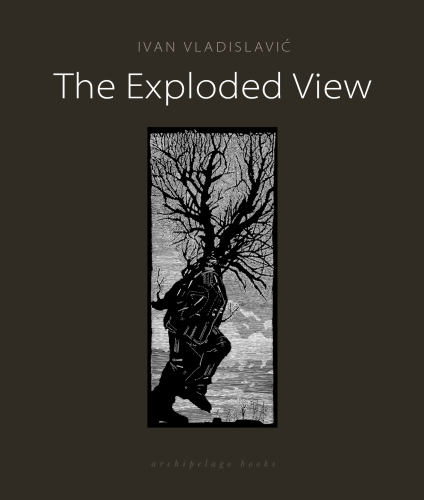
The Exploded View
کتاب های مرتبط
- اطلاعات
- نقد و بررسی
- دیدگاه کاربران
نقد و بررسی

Starred review from November 7, 2016
The latest from Vladislavic (The Folly), a South African known for his knotty, wry narratives of the post-Apartheid era, is a stimulating journey around Johannesburg and into the restless minds of its inhabitants. Comprising four sections, the book surveys the city and its environs through the eyes of four introspective men, assembling a collage-like portrait of a metropolis from its sewer system to its high-arts scene. A statistician testing new versions of a national census questionnaire becomes infatuated with one of the respondents, a television anchor living at an upscale housing development called Villa Toscana, which induces a “dreamlike blend of familiarity and displacement.” Inspecting a shoddily constructed affordable apartment complex, a white sanitation engineer ponders the project’s blend of optimism and futility, as well as the country’s race relations, over a meal with black colleagues. A mixed-media artist slices up kitschy animal masks, “liberating the curio from its stifling form” while ignoring their provenance and the craftsmen who made them. Finally, a billboard erector’s stalled journey home sets his mind racing. The title refers to those Ikea-like diagrams in which an object is exploded into its component parts; the characters enjoy no such coherent vision of how everything fits together in South Africa’s fractured cultural landscape. A sense of unease often permeates these subtly linked tales, which skillfully lay out a disorienting blueprint of modern Johannesburg.

January 1, 2017
These four short stories set in South Africa focus on mildly unsuccessful people with modest ambitions who are continually thwarted either by chance or by their own inadequacies. "Villa Toscana," the opening story, introduces us to Les Budlender, a statistician collecting census data in Johannesburg. He becomes enamored with--perhaps even obsessed by--Iris du Plooy, a model, actress, and television announcer, so he keeps manufacturing excuses to return to her home for more data-gathering and (supposedly) more help in refining the questionnaire. While he tells himself he might be falling in love, it becomes clear to both Iris and the reader that he's starting to creep her out. "Afritude Sauce" introduces us to Egan, a sanitary engineer--not a euphemism, for he actually designs sewage systems for housing projects. After he's trotted out to one of these projects to see the problems and hear residents' complaints, he ends up having dinner with a housing official and two members of the Residents' Association. All of them are quite cozy except for Egan, who becomes more and more marginalized during the dinner conversation. In his room afterward he has an epiphany as an "intolerable pressure began to rise in him, as if every petty irritation he had endured in his life was repeating on him, trying to force its way to the surface." This "pressure" of "petty irritation" pretty much sums up how Vladislavi?'s characters experience life, for they feel little fulfillment or gratification but rather vexation and annoyance--and occasionally, as in the final story, even attract violence, as a man putting up billboards for Crocodile Lodge is devoured in the darkness of a brutal attack. Vladislavic's plain and understated style gives force to the longing and frustrated desires of his characters.
COPYRIGHT(2017) Kirkus Reviews, ALL RIGHTS RESERVED.

February 1, 2017
The loosely related stories in this novella-sized collection don't explore as much as gingerly expose the race and class tensions that inform daily life in South Africa: thus, an exploded view of the country's contemporary society. In the first story, a nebbishy census worker stalks a local female news personality who lives in a Tuscan-themed gated community. In the second, a white sanitation engineer inspects cheap low-income housing, then has a tense business dinner with black township officials in a restaurant decorated with fake African masks. The successful black artist of the third story exploits commercial African kitsch--like that found in the restaurant--to make trendy, expensive art pieces. The last story demonstrates just how dangerously close to the surface the racial divide is when a white billboard maintenance man finds himself outside those gated communities after dark, in that nowhere land next to a freeway. VERDICT These stories are modern and bleak, almost dystopian, with the characters' festering interior monologs generating ongoing anxiety. Yet, Vladislavic presents an enlightening view of a country grappling with the aftermath of apartheid that is especially meaningful now for American audiences.--Reba Leiding, emeritus, James Madison Univ. Lib., Harrisonburg, VA
Copyright 2017 Library Journal, LLC Used with permission.

























دیدگاه کاربران